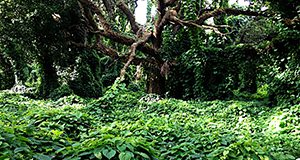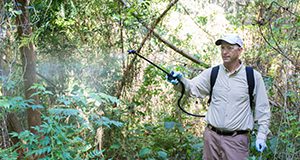Because researchers and land managers in Florida have been dealing with invasive species for decades, there is an abundance of resources available to the public regarding invasive species. Sometimes, the volume of available information can be confusing. This 6-page document aims to inform the general public, land managers, researchers, local and state policy makers, and others who seek guidance in accessing regulatory and nonregulatory non-native plant lists in the state of Florida. This publication explains the origins of the lists, meaning of inclusion on a particular list, and ways to access each of the lists. Written by Deah Lieurance and Lyn A. Gettys, and published by the UF/IFAS Agronomy Department, August 2019.
http://edis.ifas.ufl.edu/ag436
Tag: invasive plant species
Brazilian Peppertree Control
Brazilian peppertree is encroaching upon nearly all terrestrial ecosystems in central and south Florida. This 5-page document discusses the plant's habitat, identification, characteristics, and biology as well as control methods. Written by K. T. Gioeli, S. F. Enloe, C. R. Minteer, and K. A. Langeland, and published by the UF/IFAS Agronomy Department, revised November 2018.
http://edis.ifas.ufl.edu/aa219
Herbicides to Kill Invasive Trees in Home Landscapes and Surrounding Natural Areas
Several plant species that are invasive in natural areas of public lands also occur on private property. Invasive plants on private property that thrive within both landscaped and surrounding natural areas can serve as a source of infestation to other natural areas. Therefore, property owners are encouraged to remove invasive plant species from both areas. This 5-page fact sheet is a major revision that discusses different herbicides, hand-pulling, stump grinding, foliar herbicide application, cut stump herbicide application, basal bark herbicide application, hack-and-squirt, frill, or girdle herbicide application, licenses and training, and control of specific invasive plants. Written by K. A. Langeland and S. F. Enloe, and published by the UF Department of Agronomy, revised May 2016.
http://edis.ifas.ufl.edu/ag259


